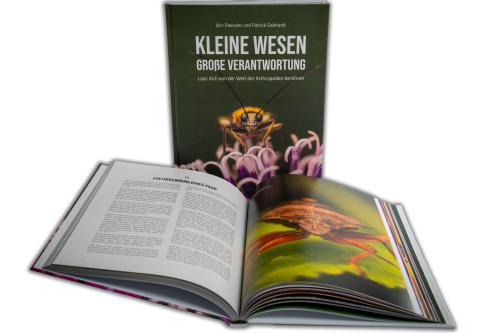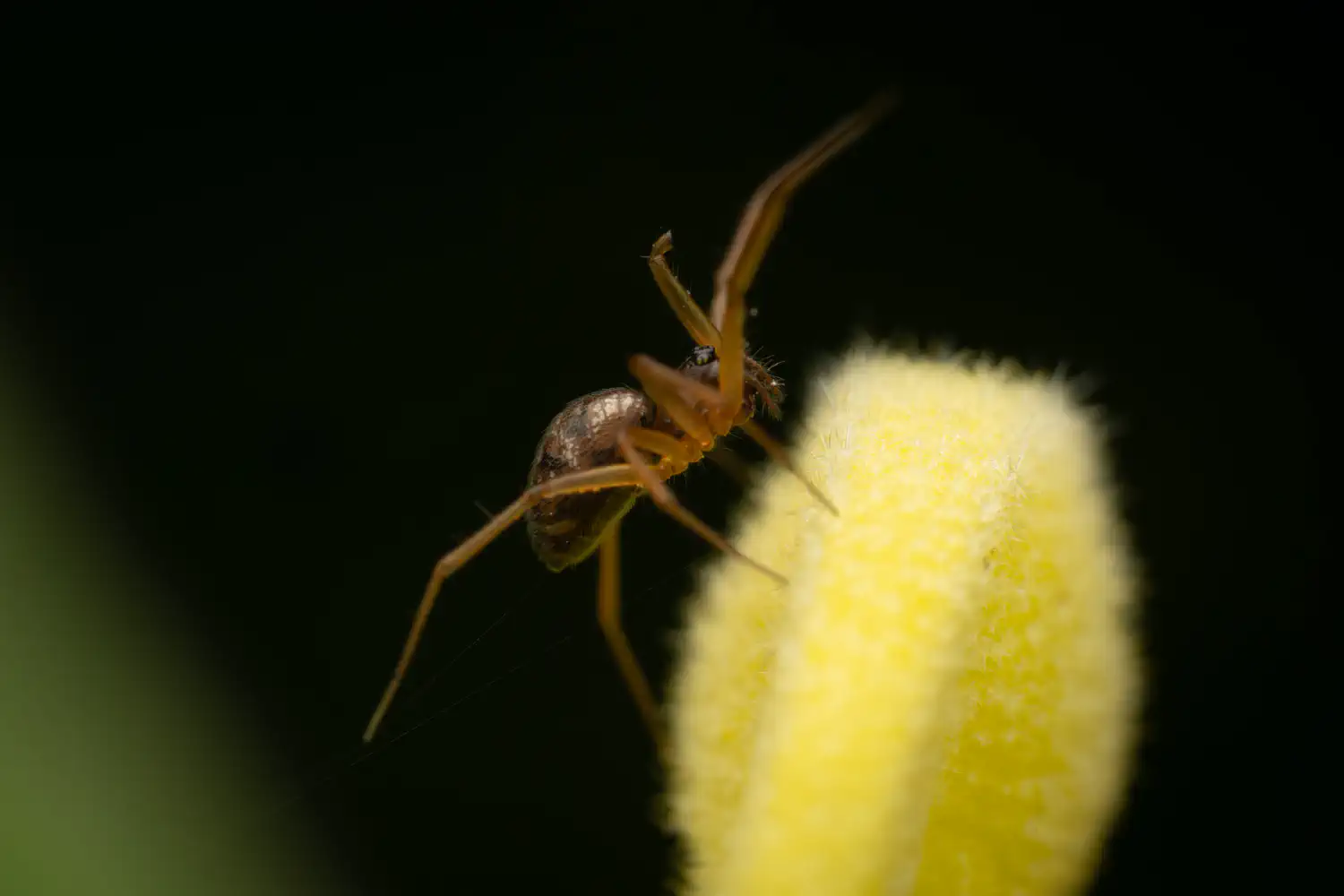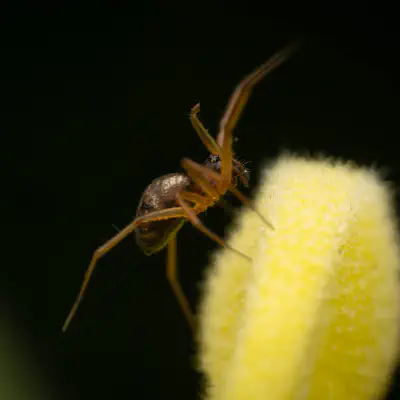Sheetweb and Dwarf Weavers Lat. “Linyphiidae“
Linyphiidae is a family of very small spiders, including more than 4,300 described species in 601 genera worldwide. This makes Linyphiidae the second largest family of spiders after the Salticidae. New species are still being discovered throughout the world, and the family is poorly known. Because of the difficulty in identifying such tiny spiders, there are regular changes in taxonomy as species are combined or divided.
Hierarchy
Description
In Linyphiidae, the clypeus is normally over twice as high as the diameter of the anterior median eyes. The chelicerae have lateral stridulating ridges and lack lateral condyles. The legs are long and thin, and bear macrosetae. The abdomen is usually oval or elongated.
Distribution
Spiders of this family occur nearly worldwide. In Norway many species have been found walking on snow at temperatures of down to −7 °C. While these spiders are light enough to utilize ballooning for travel, they are limited by the physics of an often turbulent atmosphere and microclimate. For this reason ballooning spiders have little control over where they land, leading to a high mortality rate for the practice and its predominant usage by spiderlings and juveniles. The travel of money spiders by ballooning likely contributes to their vast distribution and speciation.
Predators and prey
Among birds, goldcrests are known to prey on money spiders. Money spiders are known to prey on aphids, springtails, flies, and other spiders.
Taxonomy
The Pimoidae are the sister group to the Linyphiidae. There are six subfamilies, of which Linyphiinae (the sheetweb spiders), Erigoninae (the dwarf spiders), and Micronetinae, contain the majority of described species. Many species have been described in monotypic genera, especially in the Erigoninae, which probably reflects the scientific techniques traditionally used in this family. Common genera include Neriene, Lepthyphantes, Erigone, Eperigone, Bathyphantes, Troglohyphantes, Tennesseellum and many others. These are among the most abundant spiders in the temperate regions, although many are also found in the tropics. The generally larger bodied members of the subfamily Linyphiinae are commonly found in classic “bowl and doily” webs or filmy domes. The usually tiny members of the Erigoninae are builders of tiny sheet webs. These tiny spiders (usually 3 mm or less) commonly balloon even as adults and may be very numerous in a given area on one day, only to disappear the next. Males in the subfamily Erigoninae typically have modified cephalothoraxes. These modifications are diagnostic for a given taxon, being genus or species-specific. These come in an impressive array of forms including, but not limited to, grooves, tubercles, projections, bumps, lobes, and spines. Occasionally, the projections may be decorated with tufts of hair or even bear eyes. The following are select examples of species in which males possess rather remarkable modifications. Walckenaeria acuminata has its eyes placed on a tall, thin spire whose height exceeds the length of the cephalothorax. Grammonota gigas has a transverse row of four longitudinal lobes behind the eyes. Gnathonargus unicorn has a long, slender, upward-pointing clypeal projection resembling a unicorn horn. Hypselistes florens has a cephalic lobe shaped like an hourglass when viewed from the front. Perregrinus deformis has a short, downcurved clypeal projection resembling a human nose. Praestigia kulczynskii has its anterior median eyes placed ventrally at the end of a long, thick projection issuing from the clypeus. The genera Coreorgonal and Spirembolus have their cephalic regions deeply divided into two pronounced lobes. Eskovia exarmata has a cephalothorax shaped like a trapezoid when viewed laterally. Horcotes quadricristatus has a single, sharp tooth sticking up between the anterior and posterior eyes. Similarly, the pedipalps of males range from simple to complex in their design, with some possessing striking features and arrangements of palpal sclerites that are unique for a given genus and/or species. A few spiders in this family include:
Bowl and doily spider, Frontinella pyramitela Filmy dome spider, Neriene radiata Blacktailed red sheetweaver, Florinda coccinea Orsonwelles, a genus of giant Hawaiian Linyphids containing the largest Linyphiid, O. malus. Erigone atra, a dwarf spider
See also
List of Linyphiidae species (A–H) List of Linyphiidae species (I–P) List of Linyphiidae species (Q–Z)
References
Bosselaers, J & Henderickx, H. (2002) A new Savignia from Cretan caves (Araneae: Linyphiidae). Zootaxa 109:1-8 PDF Hågvar, S. & Aakra, K. 2006. Spiders active on snow in Southern Norway. Norw. J. Entomol. 53, 71-82.
External links
Frontinella pyramitela web (photo) ToL on Linyphiidae Spiders rebuild webs en masse after floods in Wagga Wagga Australian Geographic News report
Ancestry Graph
Further Information
„Sheetweb and Dwarf Weavers“ on wikipedia.org
„Sheetweb and Dwarf Weavers“ on iNaturalist.org
Copyright

This article uses material from the Wikipedia article Linyphiidae the free encyclopedia Wikipedia which is released under Creative Commons Attribution-ShareAlike 4.0 International License). On Wikipedia a list of authors is available.

Little beings in print
Order our calendars and books today!
Compiled with love. Printed sustainably. Experience our little beings even more vividly in print. All our publications are available for a small donation.


